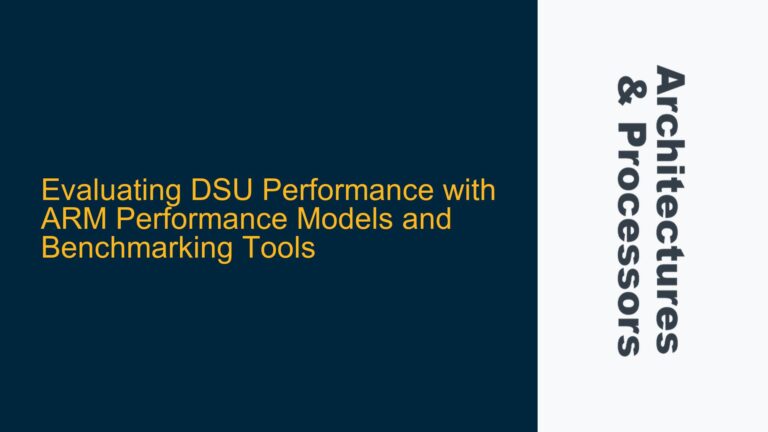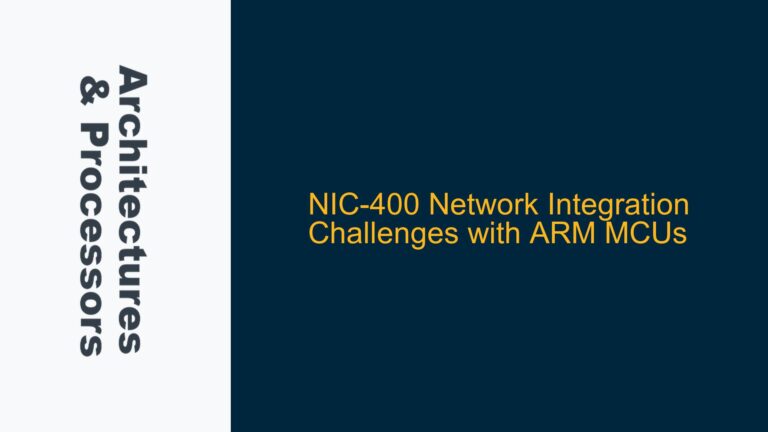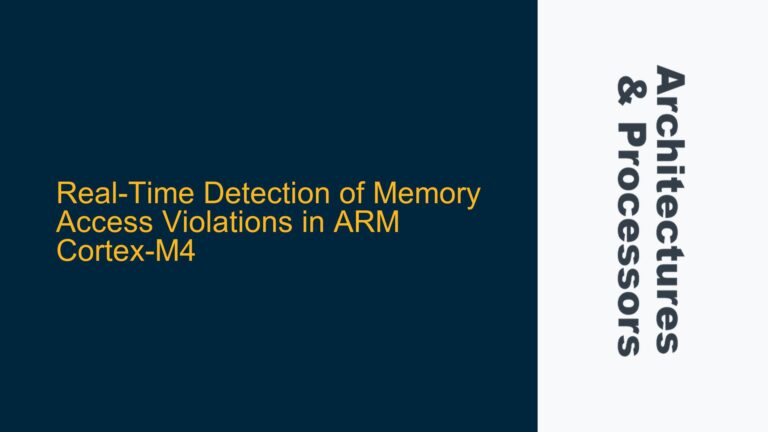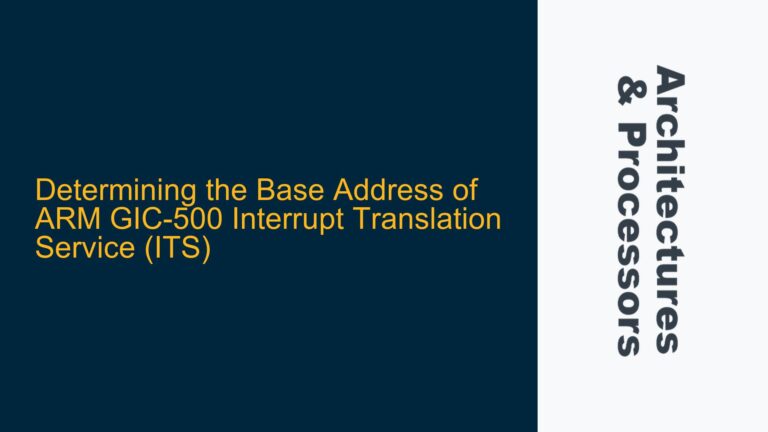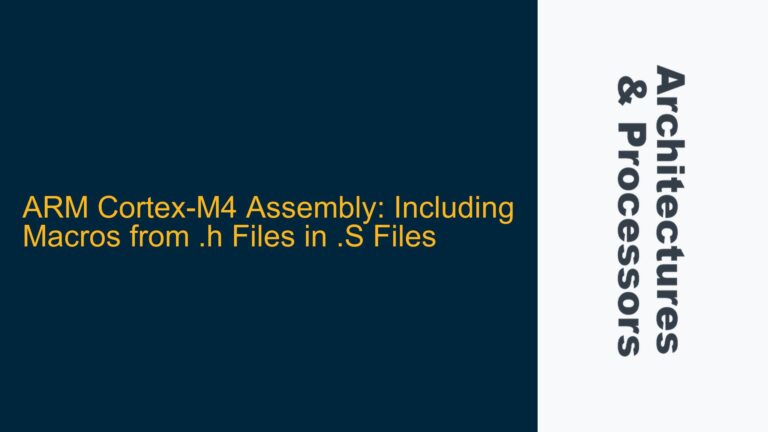ARM Cortex-R5F Undefined Instruction Exception Due to Divide by Zero
The ARM Cortex-R5F processor, when configured to handle floating-point operations, can encounter a divide-by-zero condition during execution. This condition is typically handled by enabling the Divide-by-Zero (DZ) bit in the System Control Register (SCTLR). When the DZ bit is set, the processor raises an Undefined Instruction exception upon encountering a divide-by-zero scenario. However, the challenge arises when attempting to confirm that the exception was indeed caused by a divide-by-zero condition. The Floating-Point Status and Control Register (FPSCR) contains a Divide-by-Zero Exception (DZC) bit, which should theoretically indicate whether a divide-by-zero condition occurred. Unfortunately, as per the ARM Cortex-R5 and Cortex-R5F Technical Reference Manual (TRM), the exception enable bits in the FPSCR, including the DZC bit, read as zero and cannot be written. This limitation makes it difficult to definitively determine the cause of the Undefined Instruction exception.
The core issue revolves around the inability to read the DZC bit in the FPSCR to confirm a divide-by-zero condition. This is particularly problematic in systems where precise exception handling and reporting are critical. The inability to confirm the cause of the exception can lead to ambiguous error reporting, making it difficult for developers to diagnose and resolve issues related to floating-point arithmetic operations. The problem is further compounded by the fact that the FPSCR’s exception enable bits are read-only and cannot be modified, leaving developers with limited options for detecting and handling divide-by-zero conditions.
FPSCR DZC Bit Read-Only Limitation and Instruction Analysis
The primary cause of the issue lies in the design of the FPSCR in the ARM Cortex-R5F processor. According to the ARM Cortex-R5 and Cortex-R5F TRM, the exception enable bits in the FPSCR, including the DZC bit, are read-only and always return zero when read. This design decision was likely made to simplify the hardware implementation or to adhere to certain architectural constraints. However, it has the unintended consequence of making it impossible to directly determine whether a divide-by-zero condition caused the Undefined Instruction exception.
Another potential cause of the issue is the lack of a clear mechanism in the ARM architecture to propagate the divide-by-zero condition from the floating-point unit (FPU) to the exception handling logic in a way that can be easily detected by software. While the DZ bit in the SCTLR allows the processor to raise an exception when a divide-by-zero condition occurs, it does not provide a direct way to communicate the cause of the exception to the exception handler. This lack of communication between the FPU and the exception handling logic is a significant limitation in the ARM Cortex-R5F architecture.
Given these limitations, developers are forced to rely on indirect methods to determine the cause of the Undefined Instruction exception. One such method involves analyzing the instruction that caused the exception to determine whether it was a floating-point divide operation. If the instruction is a floating-point divide, it can be assumed that the exception was caused by a divide-by-zero condition. However, this approach is not foolproof, as it relies on assumptions and does not provide definitive proof of the cause of the exception.
Implementing Instruction Analysis and Custom Exception Handling
To address the issue of detecting and reporting divide-by-zero conditions in the ARM Cortex-R5F processor, developers can implement a combination of instruction analysis and custom exception handling. The first step in this process is to analyze the instruction that caused the Undefined Instruction exception. This can be done by examining the program counter (PC) at the time of the exception and disassembling the instruction at that address. If the instruction is a floating-point divide operation (e.g., VDIV.F32), it can be inferred that the exception was likely caused by a divide-by-zero condition.
Once the instruction has been identified as a floating-point divide, the next step is to implement custom exception handling logic to report the divide-by-zero condition. This can be done by setting a custom flag or variable in the exception handler to indicate that a divide-by-zero condition was detected. The exception handler can then use this flag to generate an appropriate error message or log entry, providing the user with information about the cause of the exception.
In addition to instruction analysis, developers can also consider implementing runtime checks to prevent divide-by-zero conditions from occurring in the first place. For example, before performing a floating-point divide operation, the divisor can be checked to ensure that it is not zero. If the divisor is zero, the operation can be skipped, and an error can be reported immediately. This approach can help to reduce the likelihood of encountering divide-by-zero conditions and improve the overall robustness of the software.
Another potential solution is to use a software-based floating-point emulation library that provides more detailed exception handling capabilities than the hardware FPU. These libraries can often provide more granular control over floating-point operations and can be configured to detect and report divide-by-zero conditions more effectively. However, this approach may come with a performance overhead, as software-based floating-point emulation is typically slower than hardware-based FPU operations.
In conclusion, while the ARM Cortex-R5F processor’s FPSCR design limits the ability to directly detect and report divide-by-zero conditions, developers can use a combination of instruction analysis, custom exception handling, and runtime checks to work around these limitations. By carefully analyzing the instructions that cause exceptions and implementing robust exception handling logic, developers can improve the reliability and debuggability of their software, even in the face of hardware limitations.

